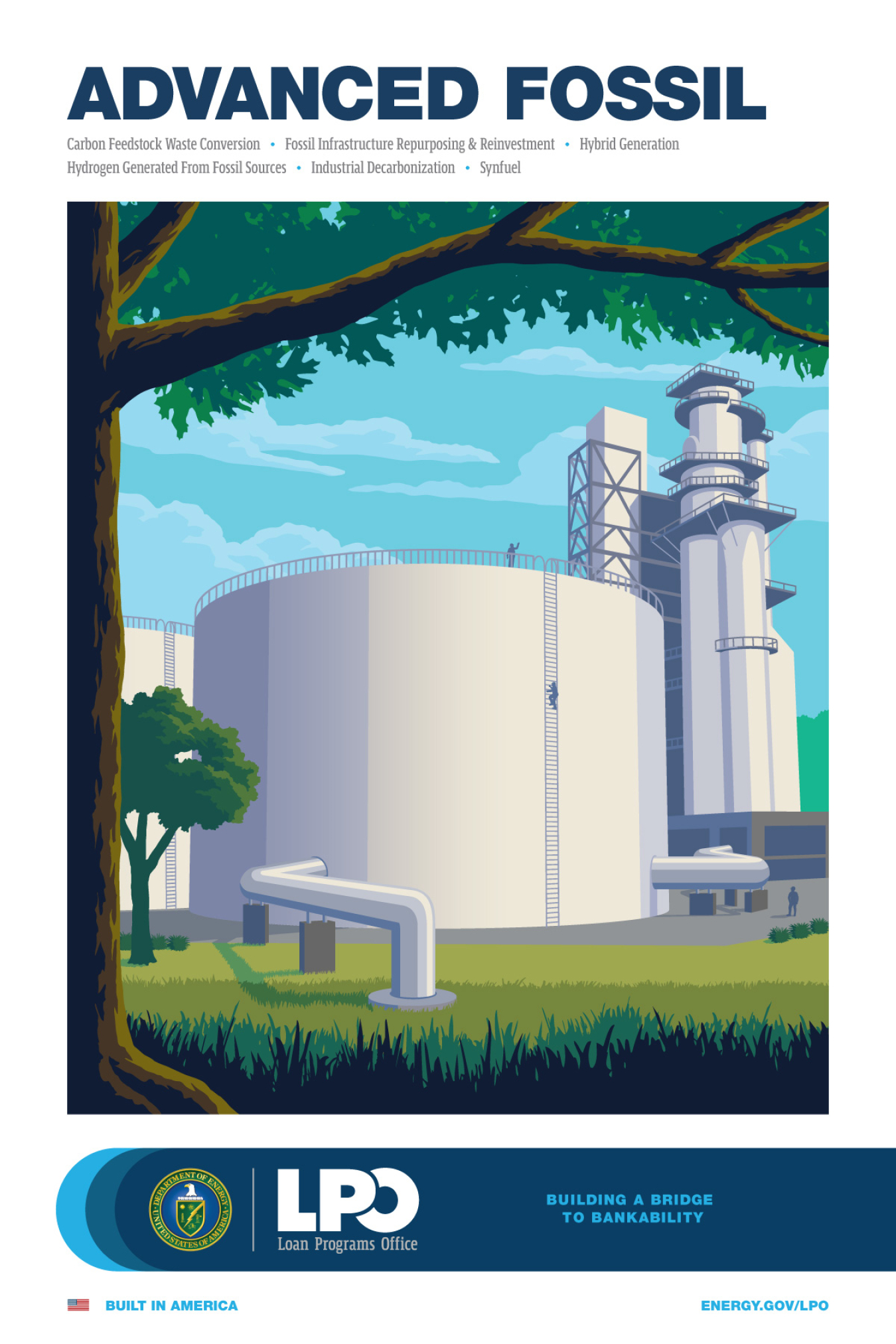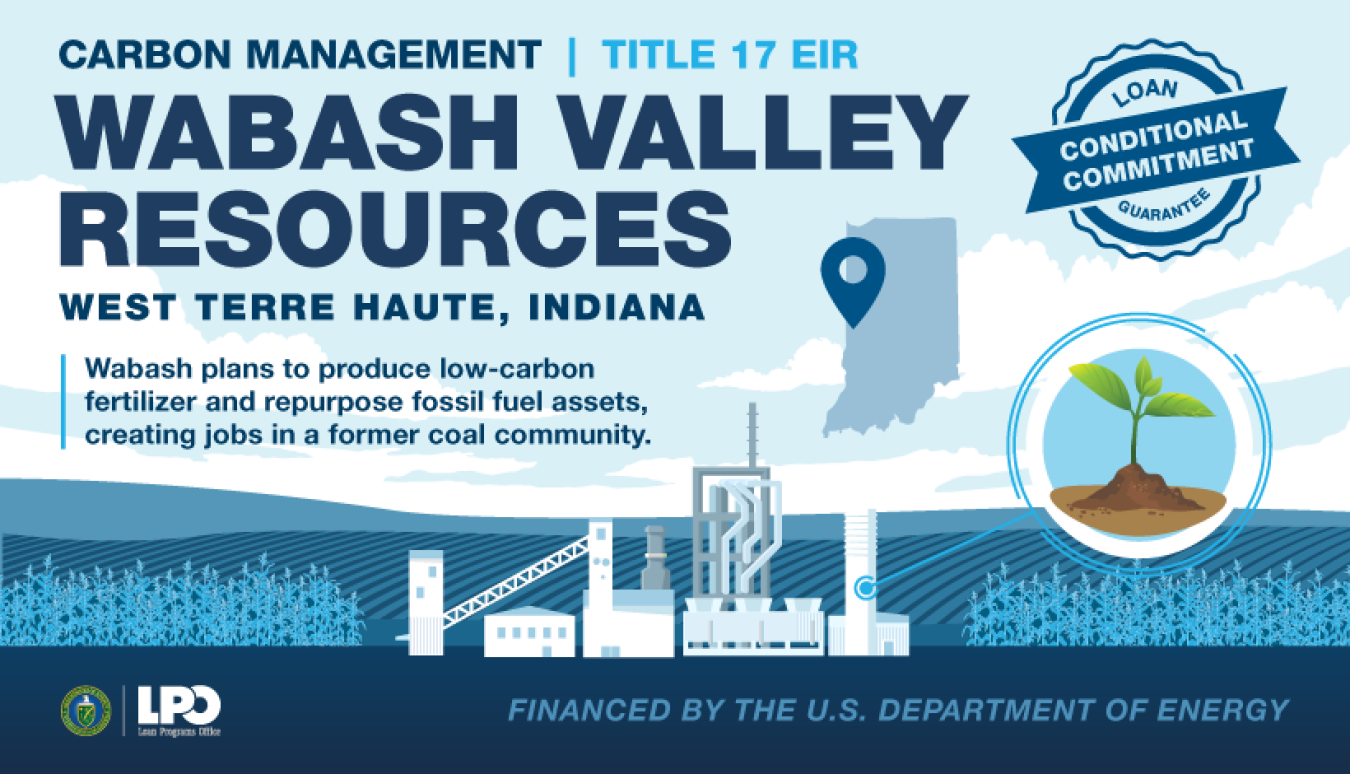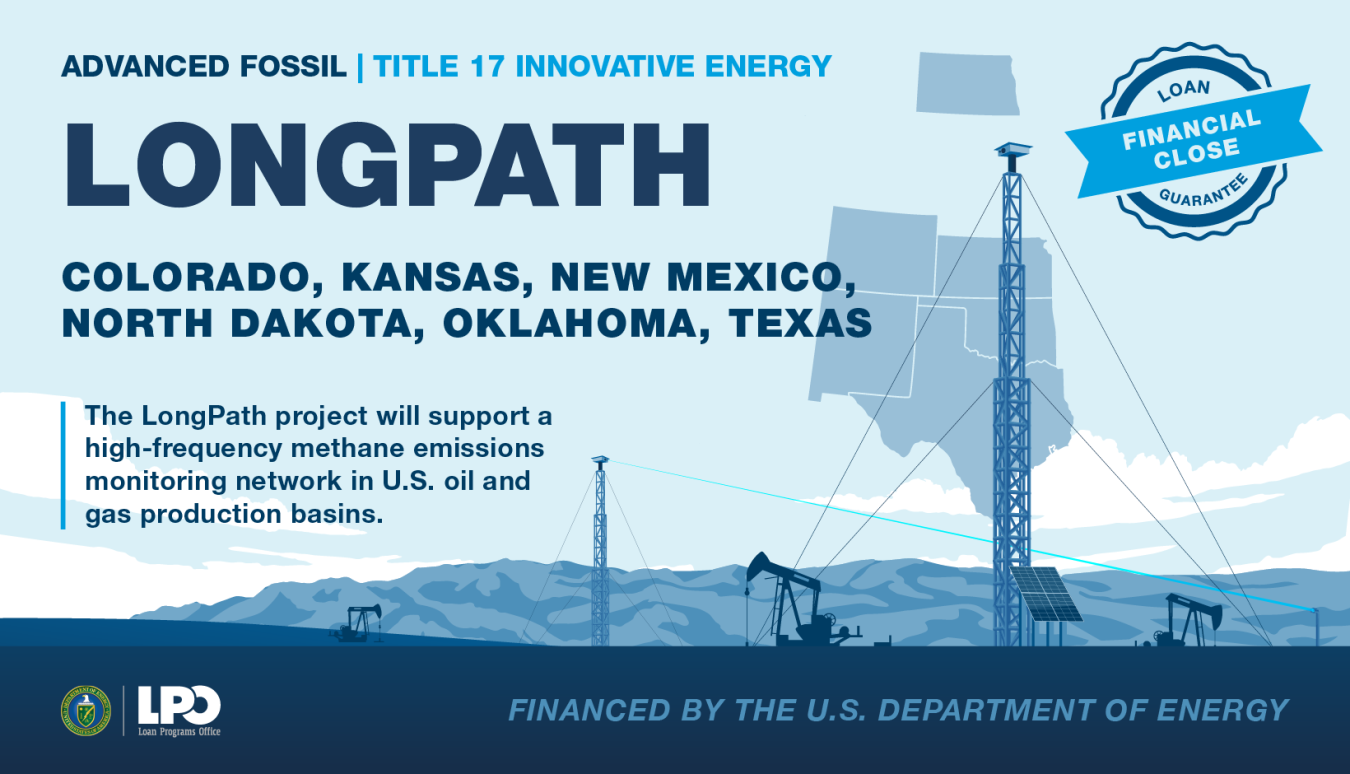Jigar Shah, Director of the Loan Programs Office, dives into how the DOE Loan Programs Office (LPO) is supporting U.S. advanced fossil projects in line with the Biden Administration’s clean energy goals.
October 25, 2024
In this post, I’ll explore how the DOE Loan Programs Office (LPO) is supporting advanced fossil projects.
As electrification, end-use efficiency, and renewables adoption sustain reductions in U.S. power sector emissions, the Energy Information Administration’s (EIA) 2023 Annual Energy Outlook projects the domestic capacity of fossil-fired generation will drop through 2030 before leveling off for the foreseeable future. Even though they comprise a declining share of electricity generation, fossil fuels are expected to continue to play a role in the nation’s economy. Growing global demand for fuels and exports like chemicals, fuels, and fertilizers has led EIA to project natural gas and oil production will continue, especially as the U.S. industrial base is expected to grow. The opportunities to decarbonize the production of petroleum-derived exports cannot with chemicals production and oil refining accounting for ~11% of the U.S.’s total energy-related carbon dioxide emissions in 2021, according to DOE’s Decarbonizing Chemicals and Refining Liftoff Report.
Whereas Carbon Capture, Utilization, And Sequestration projects will be important for the decarbonization of legacy power assets and may offer scalable solutions to industrial decarbonization in the future, there are many Advanced Fossil technologies ready today with the potential to reduce carbon emissions in hard-to-decarbonize sectors. These include abating emissions associated with upstream oil and gas extraction and midstream transport activities, recycling fossil fuel-derived products, and producing fossil-dependent manufacturing feedstocks more cleanly or with decarbonized alternatives. With the right technologies and processes, fossil fuels can also be used as zero- or low-emissions inputs in the production of hydrogen, explained further in our Hydrogen Sector Spotlight.
LPO can support Advanced Fossil technologies through its loan programs in a few different ways. Title 17 Clean Energy Financing Program’s Innovative Energy and Innovative Supply Chain categories (Section 1703) can provide financing for deployment of advanced fossil technologies or for supply chain projects that manufacture advanced fossil technologies; if qualifying Advanced Fossil projects receive meaningful support from a State Energy Financing Institution, they do not need to be innovative. The Title 17 Energy Infrastructure Reinvestment (Section 1706) category provides financing for projects that either retool, repower, repurpose, or replace fossil infrastructure that has ceased operations or to enable operating energy infrastructure to avoid, reduce, utilize, or sequester air pollutants or anthropogenic emissions of greenhouse gases, including the repair and/or replacement of natural gas pipelines to reduces methane leaks. Finally, the Tribal Energy Financing program can support advanced fossil technologies in eligible projects to federally recognized tribes and qualified tribal energy development organizations.
As of the end of September 2024, financing requested from LPO for Advanced Fossil projects totaled $16.7 billion. For more current details, view LPO’s Monthly Application Activity Report, which explains the level of interest from applicants for LPO financing and what technology sectors have been most actively engaged with LPO.

ADVANCED FOSSIL – WABASH VALLEY RESOURCES
In September 2024, LPO announced a conditional commitment of up to $1.559 billion to Wabash Valley Resources for a commercial-scale, waste-to-ammonia production facility with carbon capture and sequestration (CCS) technology in West Terre Haute, Indiana. The project would repurpose an industrial coal gasifier to produce 500,000 metric tons of anhydrous ammonia-based annually for Corn Belt farmers use as locally sourced nitrogen fertilizers while permanently storing captured CO2.The project has potential to be the world’s first carbon-negative ammonia production facility and the first producer in the Corn Belt to produce low-carbon ammonia cost-competitively.
Ammonia-based fertilizer is a crucial element of the U.S. agricultural system, but its production is a significant contributor to climate change, accounting for between 1-2% of global CO2 emissions. Currently, the region is lacking supply of locally sourced nitrogen fertilizers the volatile market for ammonia often subjects farmers to price fluctuations. By producing low-carbon ammonia and permanently sequestering 1.6 million metric tonnes of CO2 annually, Wabash Valley Resources will address these challenges while demonstrating a commercially and environmentally viable end-use alternative for petcoke, a waste product generated during the oil refining process.

ADVANCED FOSSIL – LONGPATH BASIN SCAN
In October 2024, LPO announced a $162.4 million loan guarantee for the multi-state, real-time methane emissions monitoring network being fabricated and deployed by LongPath Technologies, Inc. LPO’s second advanced fossil announcement will support the infrastructure buildout for an emissions detection, location, and quantification subscription service for tens of thousands of oil and gas extraction sites across California, Colorado, New Mexico, North Dakota, Oklahoma, Pennsylvania, Texas, and Wyoming. Using tower-mounted, eye-safe lasers manufactured in Boulder, Colorado to accurately identify molecules including methane, the system can notify operators in the event of even the smallest leaks to facilitate a rapid response, reducing needless emissions and generating savings across the value chain.
Emissions of methane, a greenhouse gas up to 80 times more potent than carbon dioxide, occur across the oil and gas production and compression, but are difficult to identify across vast production areas, are a major source of U.S. methane emissions. The network is expected to prevent methane emissions equivalent to at least six million tons of carbon dioxide annually—like taking 1.3 million gasoline powered vehicles off the road—by enabling subscribers to identify and respond to methane leaks quickly.
NEWS ROUNDUP
- Inside methane monitoring’s big moment (CTVC)
- Colorado's LongPath laser methane detection company receives $162 million DOE loan (The Denver Gazette)
- Biden administration announces $850 million in grants to cut methane emissions (The Hill)
- Why Washington and Big Oil Are Investing Billions in Ammonia (WSJ)
- Indiana’s first fertilizer plant expected to cover Eastern Corn Belt nitrogen demand (Michigan Farm News)
Jigar Shah

Former Director, Loan Programs Office
Jigar Shah served as Director of the Loan Programs Office (LPO) at the U.S. Department of Energy (DOE) from March 2021 to January 2025. He led and directed LPO’s loan authority to support deployment of innovative clean energy, advanced transportation, and Tribal energy projects in the United States. Prior, Shah was co-founder and President at Generate Capital, where he focused on helping entrepreneurs accelerate decarbonization solutions through the use of low-cost infrastructure-as-a service financing. Prior to Generate Capital, Shah founded SunEdison, a company that pioneered “pay as you save” solar financing. After SunEdison, Shah served as the founding CEO of the Carbon War Room, a global non-profit founded by Sir Richard Branson and Virgin Unite to help entrepreneurs address climate change.
Shah was also featured in TIME's list of the "100 Most Influential People" in 2024.
Originally from Illinois, Shah holds a B.S. from the University of Illinois-UC and an MBA from the University of Maryland College Park.

